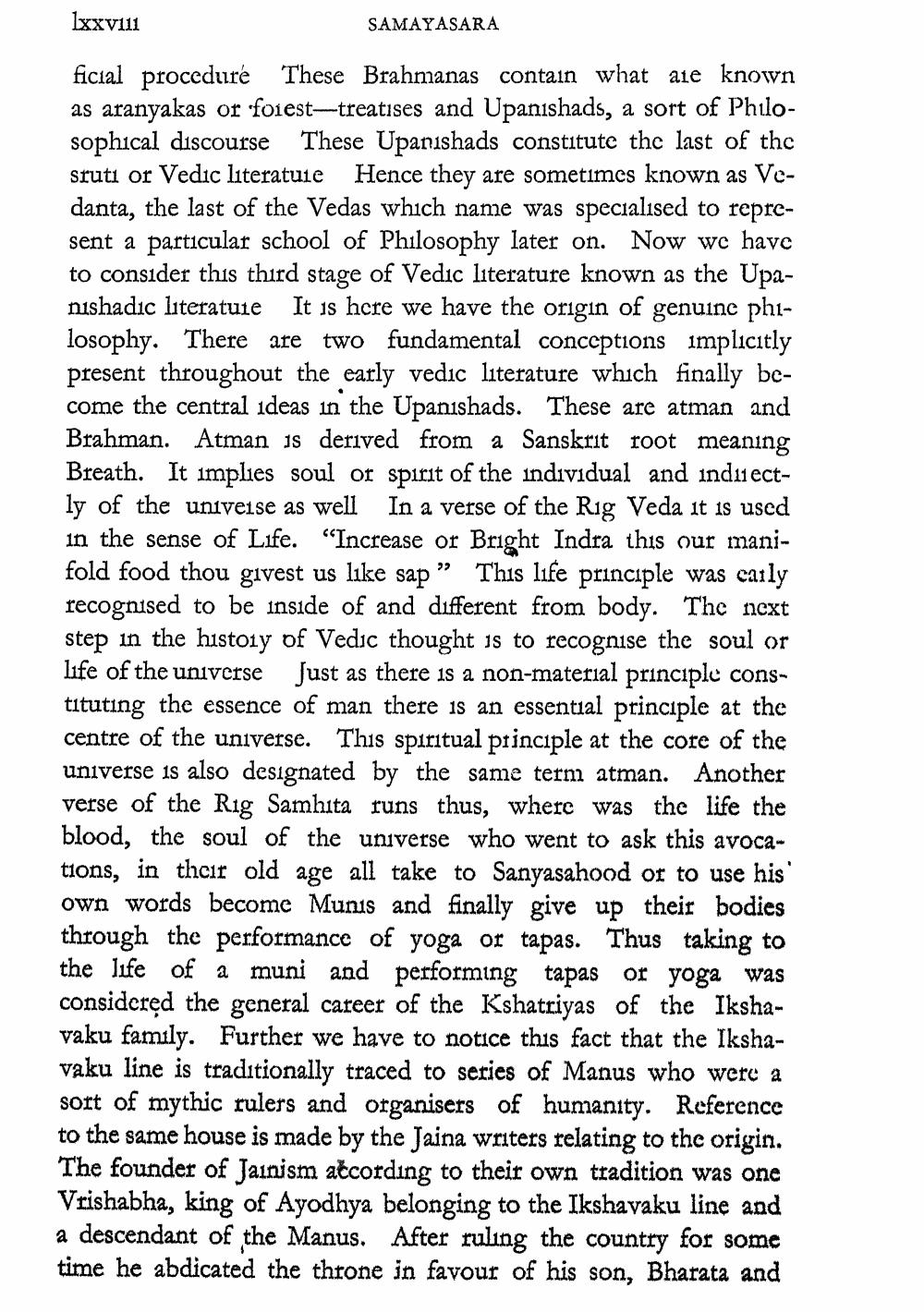________________
lxxviii
ficial procedure These Brahmanas contain what are known as aranyakas or foiest-treatises and Upanishads, a sort of Philosophical discourse These Upanishads constitute the last of the sruti or Vedic literature Hence they are sometimes known as Vedanta, the last of the Vedas which name was specialised to represent a particular school of Philosophy later on. Now we have to consider this third stage of Vedic literature known as the Upanishadic literature It is here we have the origin of genuine philosophy. There are two fundamental conceptions implicitly present throughout the early vedic literature which finally become the central ideas in the Upanishads. These are atman and Brahman. Atman is derived from a Sanskrit root meaning Breath. It implies soul or spirit of the individual and indirectly of the universe as well In a verse of the Rig Veda it is used in the sense of Life. "Increase or Bright Indra this our manifold food thou givest us like sap" This life principle was caily recognised to be inside of and different from body. The next step in the history of Vedic thought is to recognise the soul or life of the universe Just as there is a non-material principle constituting the essence of man there is an essential principle at the centre of the universe. This spiritual principle at the core of the universe is also designated by the same term atman. Another verse of the Rig Samhita runs thus, where was the life the blood, the soul of the universe who went to ask this avocations, in their old age all take to Sanyasahood or to use his own words become Munis and finally give up their bodies through the performance of yoga or tapas. Thus taking to the life of a muni and performing tapas or yoga was considered the general career of the Kshatriyas of the Ikshavaku family. Further we have to notice this fact that the Ikshavaku line is traditionally traced to series of Manus who were a sort of mythic rulers and organisers of humanity. Reference to the same house is made by the Jaina writers relating to the origin. The founder of Jainism according to their own tradition was one Vrishabha, king of Ayodhya belonging to the Ikshavaku line and a descendant of the Manus. After ruling the country for some time he abdicated the throne in favour of his son, Bharata and
SAMAYASARA




